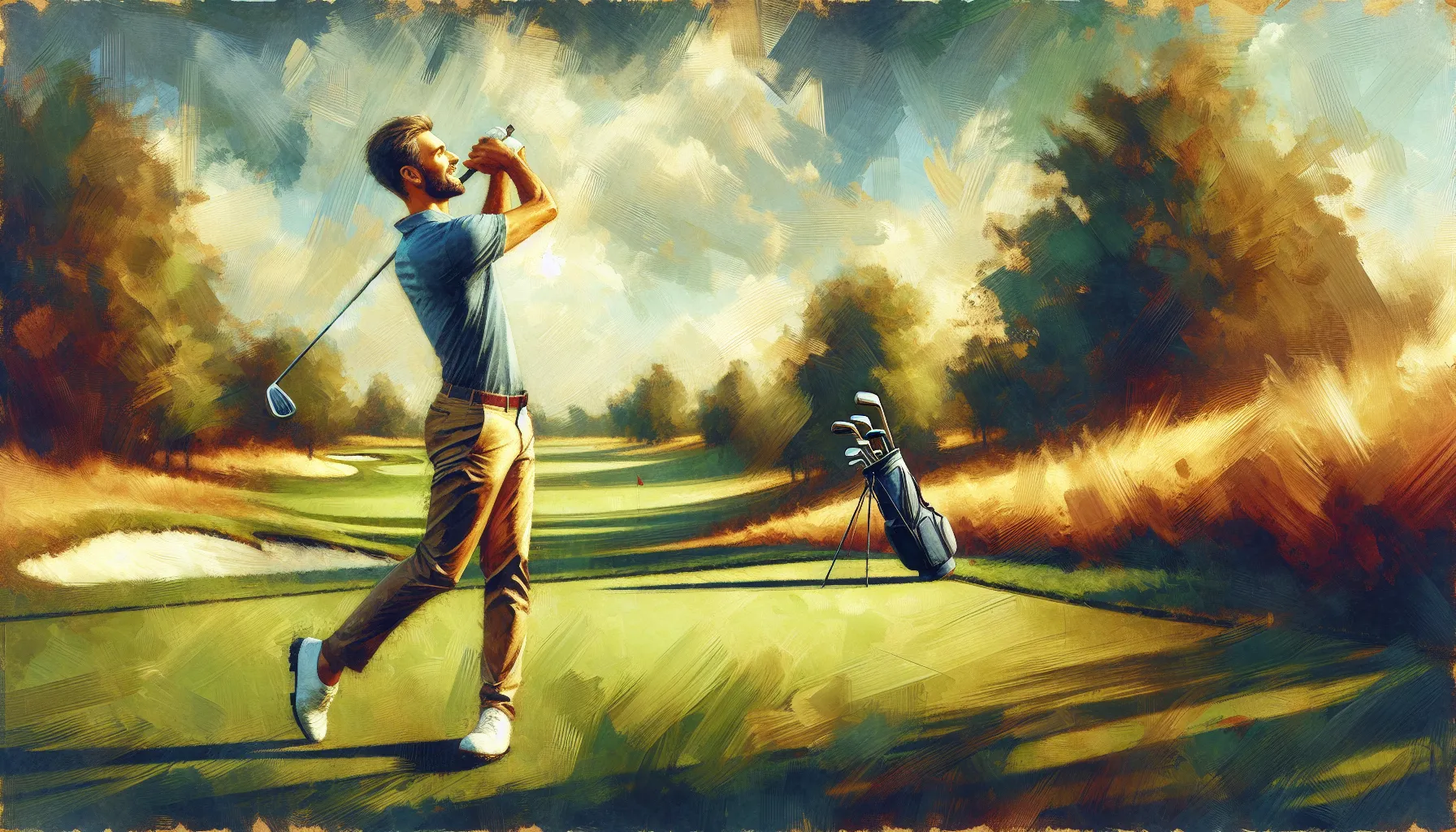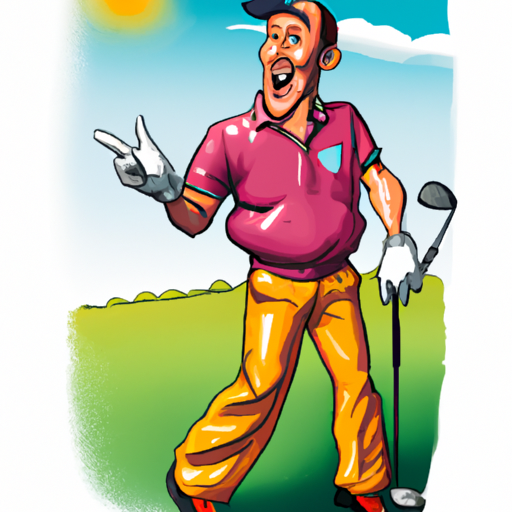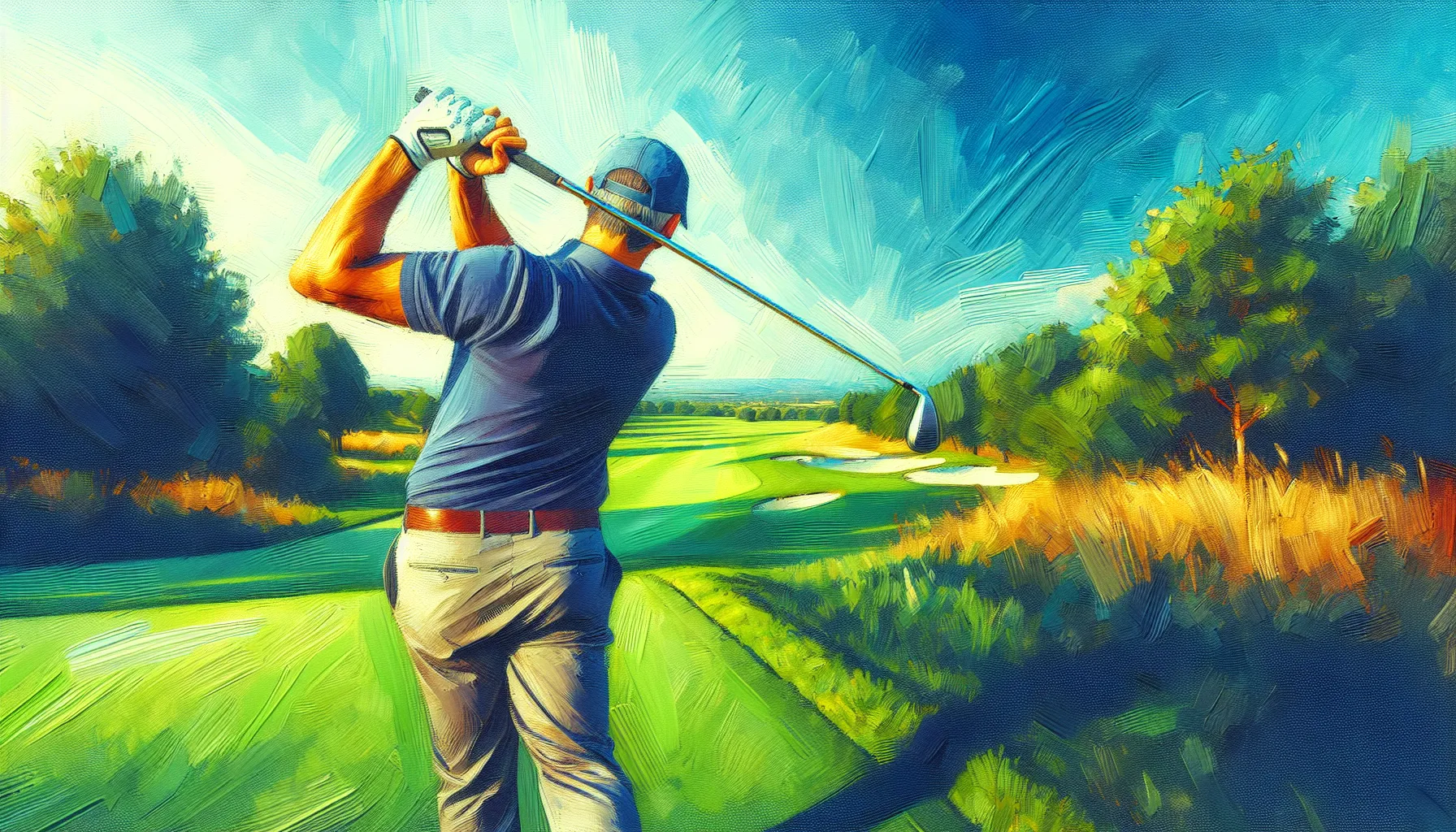How to Fix a Golf Slice: Simple Steps for Straighter Shots
Struggling with a persistent golf slice? You’re not alone. In this guide, we delve into the proven techniques that can help you fix a golf slice once and for all. From adjusting your grip and posture to refining your swing path, we cover everything you need to start hitting straighter shots. Plus, don’t miss the key takeaways and FAQ section at the end for quick, actionable tips.
Hey there, fellow golf enthusiast!
If you're reading this, chances are you're all too familiar with the frustration of slicing the ball. Trust me, I’ve been there. I remember one particular round where I was feeling confident, stepped up to the first tee, and watched in horror as my ball took a hard right turn, almost as if it had a mind of its own. It was embarrassing, to say the least, especially with my buddies snickering behind me.
But don't worry, because today, we're going to tackle this common problem together and get you hitting those long, straight drives that will make your friends green with envy.
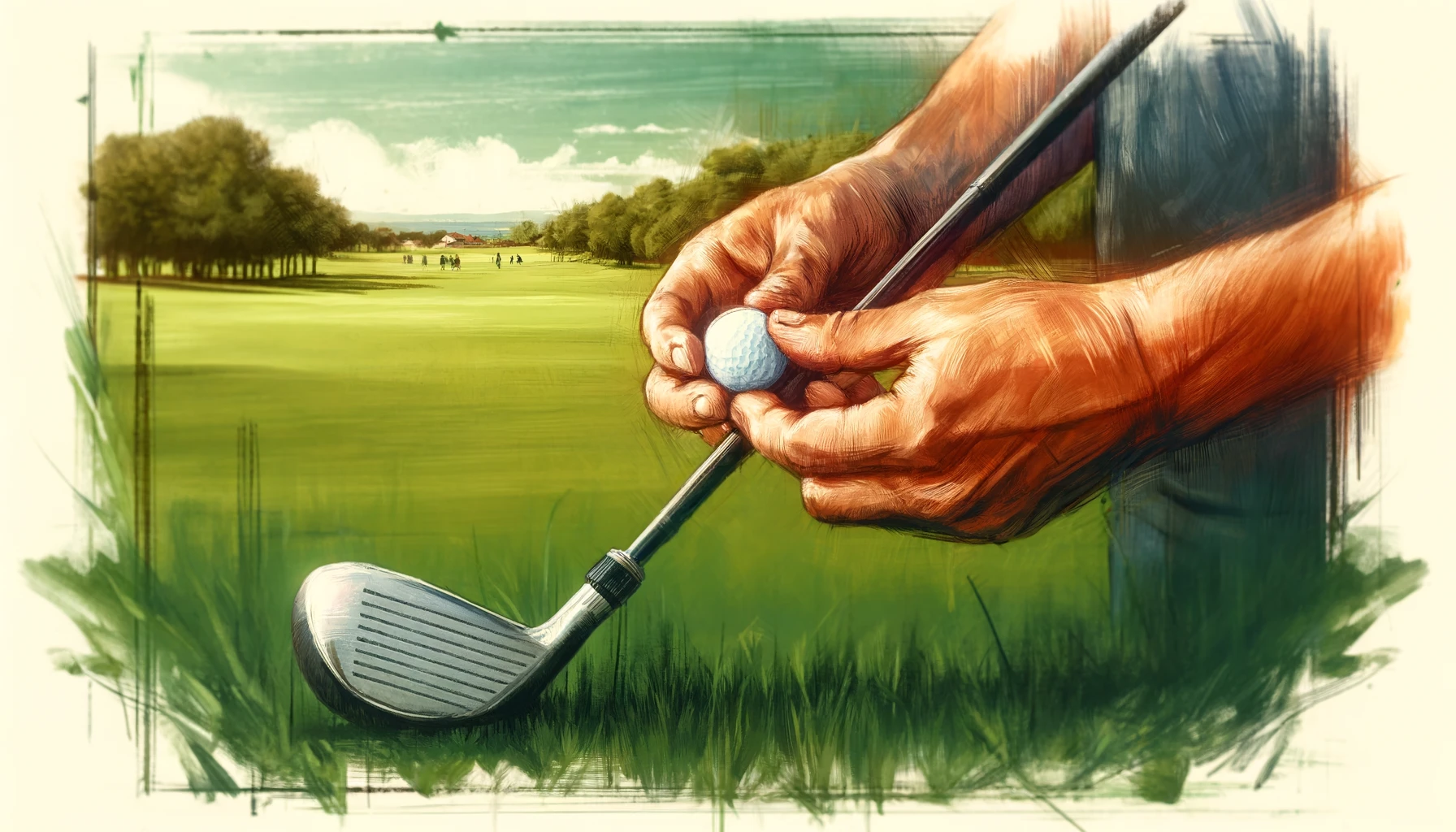 Master your grip to fix your golf slice once and for all.
Master your grip to fix your golf slice once and for all.How I Fixed My Golf Slice and Transformed My Game
For years, I struggled with an embarrassing golf slice that made my rounds frustrating and less enjoyable. Every time I stepped up to the tee, I feared that familiar curve to the right, costing me strokes and confidence. My buddies would joke about it, but inside, it was a source of constant frustration.
Determined to fix my slice, I dove into countless articles, videos, and lessons. I tried various tips and techniques, but nothing seemed to work consistently. It felt like I was going in circles, getting more confused with each attempt. My weekends became consumed with the pursuit of a solution, and I began to lose hope that I'd ever conquer this flaw in my game.
Then, one day, I stumbled upon a comprehensive guide that broke down the slice problem in a way I had never seen before. This guide emphasized the importance of understanding the root causes – from grip to posture to swing path – and offered a structured approach to address each one. It wasn't just about quick fixes; it was about creating lasting change through a series of targeted drills and techniques.
The framework provided a step-by-step process that was easy to follow. I started with adjusting my grip, then moved on to improving my posture, and finally, I focused on my swing path. Each phase came with specific drills that reinforced the changes I needed to make. The instructions were clear, and for the first time, I felt like I was making real progress.
After weeks of dedicated practice, the results were nothing short of miraculous. My slice began to fade, replaced by long, straight drives that impressed my friends and boosted my confidence. I could finally play a round of golf without the nagging fear of slicing the ball. My game transformed, and so did my enjoyment of the sport. I went from being the guy everyone joked about to the one they admired. The journey taught me that with the right approach and consistent effort, any golfer can fix their slice and elevate their game.
"Success is no accident. It is hard work, perseverance, learning, studying, sacrifice and most of all, love of what you are doing or learning to do." - Pelé
Understanding the Slice
Before we dive into the solutions, it's essential to understand what a slice is and how it differs from other ball flights like a fade. A slice is a type of shot where the ball curves dramatically to the right for a right-handed golfer (or to the left for a left-handed golfer). This is typically caused by an open clubface at impact and an out-to-in swing path.
Diagnosing the Problem: Slice vs. Fade
One of the first steps in fixing your slice is accurately diagnosing it. Both a slice and a fade curve to the right, but a fade is a controlled shot that curves slightly, whereas a slice is more severe and often unintentional. If your ball flight resembles a peeling banana, you're dealing with a slice. Additionally, if you find yourself aiming way left to keep the ball in play, you’re likely slicing the ball.
Causes of a Golf Slice
To effectively fix your slice, it's crucial to understand the underlying causes. Here are the primary factors that contribute to this frustrating problem:
Open Clubface
The most common cause of a slice is an open clubface at impact. When your clubface is open, it points to the right of the target (for right-handed golfers), causing the ball to veer off course. This often happens due to an incorrect grip or improper wrist action during the swing.
Incorrect Grip
A weak grip, where your hands are positioned too far to the left on the club, can lead to an open clubface. Ensuring a strong, neutral grip is vital for keeping the clubface square at impact.
Poor Posture
Improper posture can lead to various swing issues, including slicing. If you’re not properly aligned or balanced, it can cause an out-to-in swing path, which contributes to a slice.
Swing Path Issues
An out-to-in swing path is another common cause of a slice. This happens when the club moves from outside the target line to inside, cutting across the ball and imparting side spin that results in a slice.
Fixing Your Grip
One of the simplest yet most effective ways to fix a slice is by adjusting your grip. A proper grip ensures that the clubface stays square at impact, helping you hit straighter shots.
Importance of a Strong Grip
A strong grip helps you control the clubface and prevents it from opening during your swing. If your grip is too weak, it’s easy for the clubface to open, leading to a slice.
Step-by-Step Guide to Adjusting Your Grip
1. Check Your Left Hand (For Right-Handed Golfers)
- Place the club in your left hand and make sure the handle runs diagonally across your fingers.
- Close your hand around the club, ensuring you can see two to three knuckles when you look down.
- The "V" formed by your thumb and index finger should point towards your right shoulder.
2. Adjust Your Right Hand
- Place your right hand below your left hand on the club.
- Ensure the handle sits in the fingers rather than the palm.
- Wrap your right hand around the grip so that the "V" formed by your right thumb and index finger also points towards your right shoulder.
3. Check the Pressure
- Hold the club firmly but not too tight. Imagine you are holding a tube of toothpaste without squeezing any out.
Drills for Grip Improvement
Grip Alignment Drill:
- Practice gripping the club at home, making sure the "V" formed by your thumbs and index fingers point towards your right shoulder.
- Use a mirror to check your grip alignment and make adjustments as needed.
Knuckle Count Drill:
- When setting up, count the knuckles visible on your left hand. Adjust until you can see two to three knuckles.
- Practice this on the driving range to develop muscle memory.
Grip Pressure Drill:
- Practice swinging the club with different grip pressures. Start with a very light grip and gradually increase pressure until you find a comfortable, firm grip.
- Focus on maintaining this grip pressure throughout your swing.
By making these adjustments and practicing these drills, you can significantly reduce your slice and start hitting straighter shots.
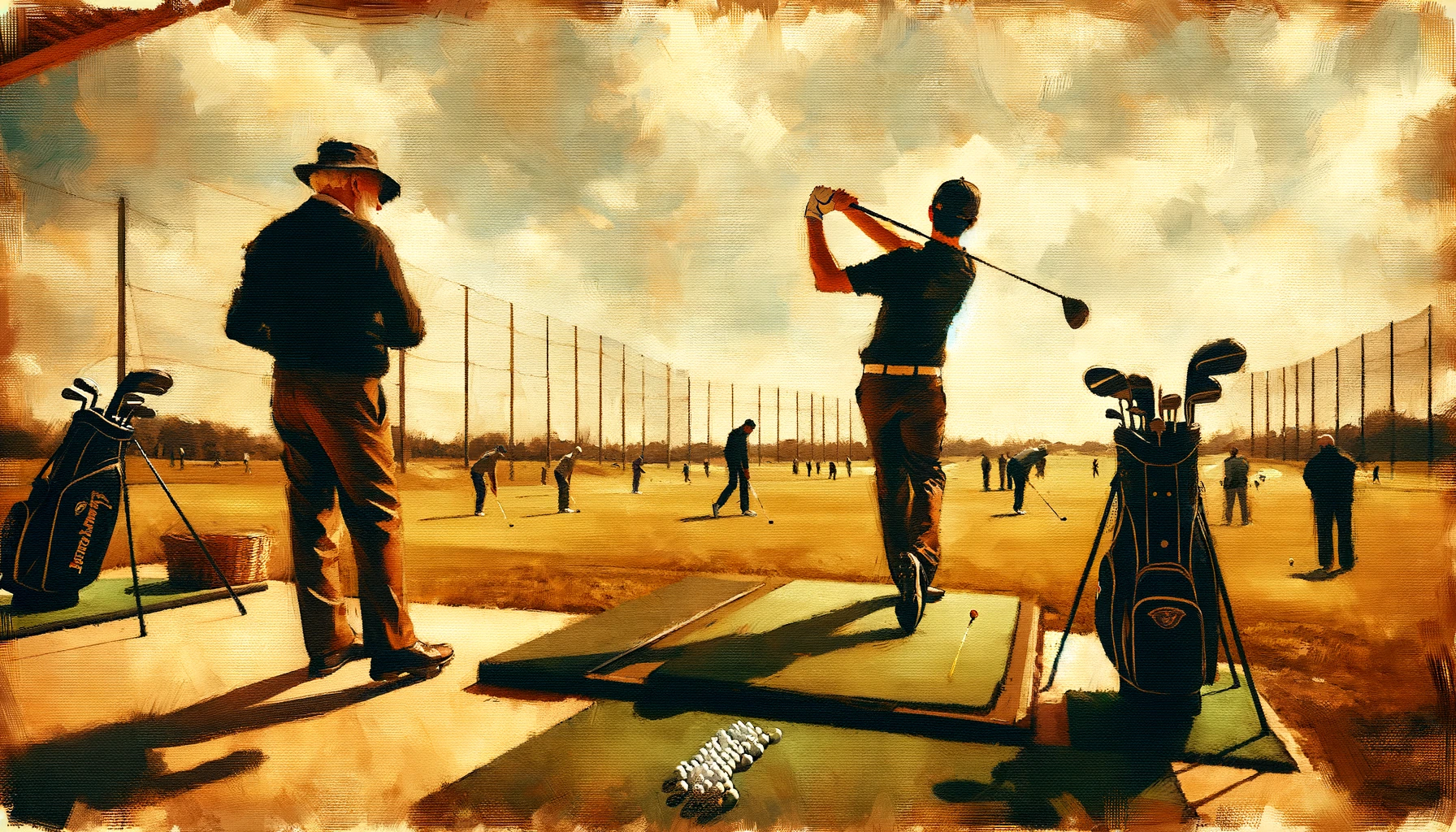 Get professional guidance to eliminate your golf slice.
Get professional guidance to eliminate your golf slice.Improving Your Posture
Correct posture is fundamental to a good golf swing. If you’re not aligned properly, it can lead to various swing issues, including a slice. Let's ensure your posture is helping, not hurting, your game.
Correct Posture Setup
1. Feet and Shoulders:
- Stand with your feet shoulder-width apart.
- Distribute your weight evenly across both feet.
2. Knees:
- Slightly bend your knees to create a stable base.
3. Hips:
- Bend from your hips, not your waist. This helps maintain balance and power throughout your swing.
4. Back and Spine:
- Keep your back straight but relaxed.
- Your spine should tilt slightly away from the target, creating a solid spine angle.
5. Arms and Hands:
- Let your arms hang naturally.
- Ensure your hands are positioned just ahead of the ball.
Common Posture Mistakes
1. Slouching:
- Slouching leads to inconsistent swings and can cause a slice.
- Ensure your back is straight and your shoulders are back.
2. Too Much Knee Bend:
- Excessive knee bend can throw off your balance.
- Maintain a slight, comfortable bend in your knees.
3. Weight Distribution:
- Shifting your weight too much to your toes or heels disrupts balance.
- Keep your weight centered over the middle of your feet.
Exercises to Improve Posture
Mirror Drill:
- Stand in front of a mirror and practice your setup.
- Check for a straight back, slight knee bend, and proper hip hinge.
Balance Board Exercise:
- Use a balance board to practice maintaining your posture.
- This helps improve stability and ensures even weight distribution.
Posture Checkpoints:
- Create a checklist of posture points (feet, knees, hips, back, arms) and go through it before each swing.
- Use a friend or coach to spot-check your posture during practice.
By focusing on these posture fundamentals and avoiding common mistakes, you can develop a more consistent swing and reduce your slice.
Adjusting Your Swing Path
An incorrect swing path is a major contributor to slicing the ball. By understanding and adjusting your swing path, you can start hitting straighter and longer shots.
Visualizing the Correct Swing Path
Imagine a hula hoop tilted towards your target. Your club should follow this tilted plane both on the backswing and the downswing. The goal is to swing the club from the inside to the outside of this plane, which promotes a straighter ball flight.
Drills to Correct Swing Path
1. Inside-Out Drill:
- Place a tee in the ground about two feet behind the ball, slightly inside the target line.
- During your swing, focus on hitting the ball and then the tee. This helps promote an inside-out swing path.
2. Alignment Stick Drill:
- Place an alignment stick on the ground parallel to your target line.
- Position a second stick at an angle, pointing from the target line towards your back foot.
- Practice swinging along the path created by the angled stick to encourage an inside-out swing.
3. Swing Path Gate Drill:
- Set up two tees on either side of your intended swing path, creating a gate.
- Practice swinging through the gate without hitting the tees, focusing on an inside-out path.
Common Swing Path Errors and How to Fix Them
1. Over-the-Top Move:
- This occurs when your upper body dominates the downswing, causing the club to come over the top of the swing plane.
- Fix: Focus on initiating the downswing with your lower body and maintaining a smooth, coordinated movement.
2. Casting:
- Casting happens when you release the club too early, causing a steep downswing.
- Fix: Practice lag drills where you delay the release of the club until just before impact.
3. Lack of Hip Rotation:
- Insufficient hip rotation can cause an out-to-in swing path.
- Fix: Work on drills that emphasize rotating your hips through the swing, such as the towel drill (placing a towel under your lead foot and pulling it with your hip rotation).
By practicing these drills and being mindful of your swing path, you can correct your slice and achieve a more consistent ball flight.
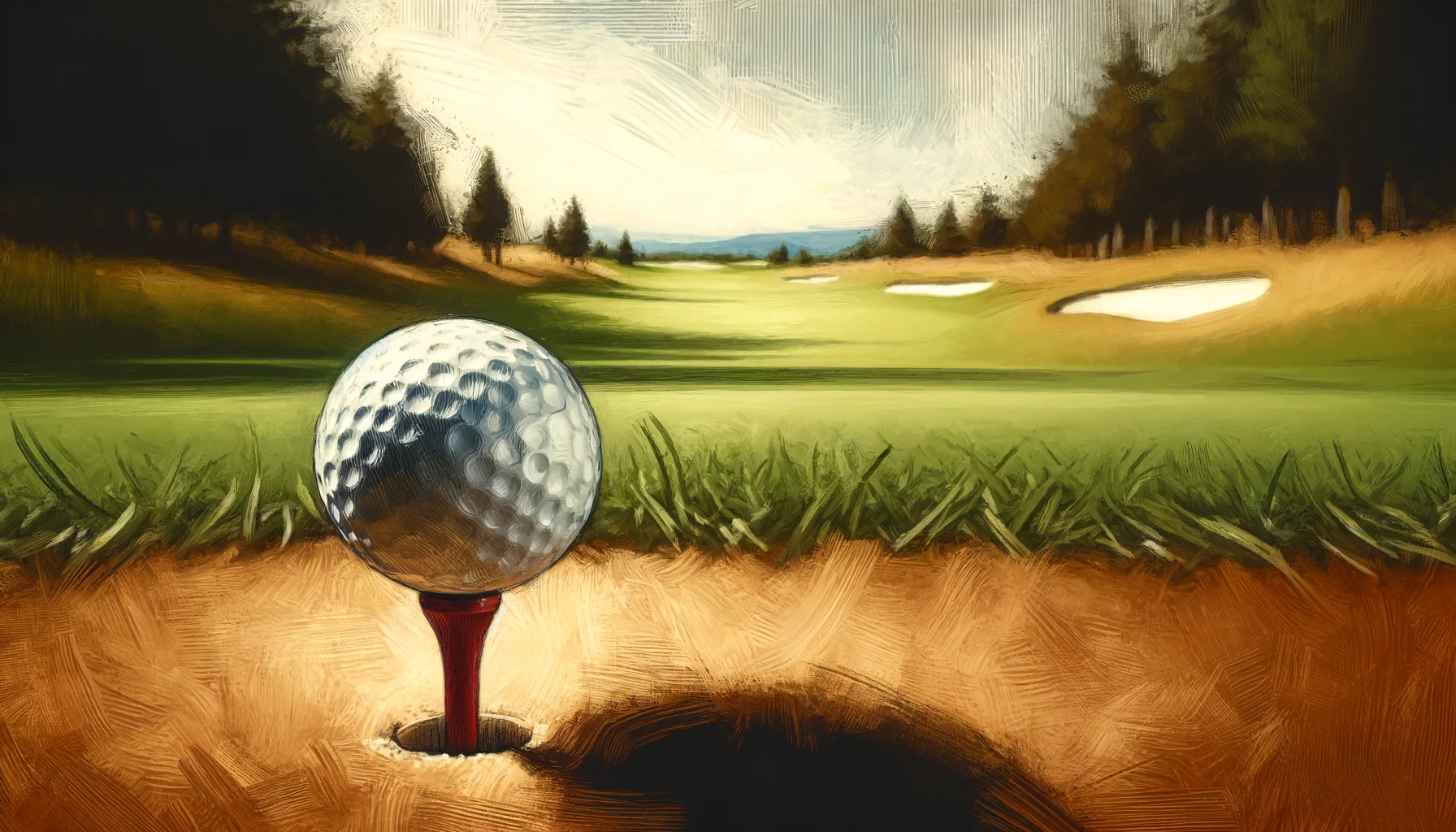 Set up your shots perfectly to avoid slicing the ball.
Set up your shots perfectly to avoid slicing the ball.Practical Drills and Techniques
Practicing specific drills can help reinforce the adjustments you've made to your grip, posture, and swing path. Here are some effective drills and techniques to help you eliminate your slice.
Detailed Drills to Practice
1. Grip Strength Drill:
- Practice gripping the club with your fingers rather than your palms.
- Focus on feeling the club in your fingers during practice swings.
- Repeat this drill until it feels natural to maintain a strong grip.
2. Posture Alignment Drill:
- Stand in front of a mirror and go through your setup routine.
- Check for proper alignment: straight back, slight knee bend, and correct hip hinge.
- Perform this drill regularly to develop a consistent setup.
3. Swing Path Drill:
- Use alignment sticks to create a visual guide for your swing path.
- Set one stick parallel to your target line and another angled towards your back foot.
- Swing along the path of the angled stick, focusing on an inside-out motion.
Step-by-Step Instructions for Each Drill
1. Grip Strength Drill:
- Stand in your golf stance without a ball.
- Hold the club in your left hand and ensure the handle runs diagonally across your fingers.
- Close your hand and ensure you see two to three knuckles.
- Place your right hand below your left, ensuring it sits in your fingers.
- Practice this grip during swings until it becomes second nature.
2. Posture Alignment Drill:
- Position yourself in front of a mirror with your golf club.
- Set your feet shoulder-width apart and distribute your weight evenly.
- Slightly bend your knees and hinge from your hips.
- Check your back and spine alignment, ensuring your back is straight and your spine tilts slightly away from the target.
- Practice this setup until it feels natural and consistent.
3. Swing Path Drill:
- Place an alignment stick on the ground parallel to your target line.
- Position a second stick at an angle, pointing from the target line towards your back foot.
- Swing your club, aiming to follow the path created by the angled stick.
- Focus on an inside-out swing motion, avoiding an over-the-top move.
Tips for Consistent Practice
1. Regular Practice Sessions:
- Set aside regular times for practice, focusing on one aspect of your swing at a time.
- Consistency is key to making lasting improvements.
2. Video Analysis:
- Record your swings and review the footage to identify areas for improvement.
- Compare your swings to professional golfers to understand the mechanics better.
3. Feedback from a Coach:
- Consider working with a golf coach to receive personalized feedback and guidance.
- A coach can help identify specific issues and provide targeted drills to address them.
By incorporating these drills and techniques into your practice routine, you'll develop the muscle memory and consistency needed to fix your slice and improve your overall game.
 Perfect your swing technique to cure your golf slice.
Perfect your swing technique to cure your golf slice.Tips and Advice
Learning from the pros can provide invaluable insights into improving your game. Here are some expert tips and advice to help you fix your slice and become a better golfer.
Insights from Professional Golfers and Instructors
1. Focus on the Fundamentals:
- According to golf instructor Hank Haney, many slicers neglect the basics. Ensuring a proper grip, stance, and alignment is crucial for a consistent swing.
2. Use Your Body, Not Just Your Arms:
- PGA Tour pro Tony Finau emphasizes the importance of using your entire body in the swing. A strong lower body turn can help keep your swing on plane and prevent slicing.
3. Stay Relaxed and Loose:
- Golf legend Jack Nicklaus advises staying relaxed throughout the swing. Tension can lead to an over-the-top move, causing a slice.
4. Practice with Purpose:
- Golf coach David Leadbetter suggests focused practice sessions. Instead of mindlessly hitting balls, work on specific drills that address your slicing issues.
Links to Videos and Further Reading
1. Grip Adjustment Tips by Hank Haney:
2. Full Swing Tips from Tony Finau Analyses:
3. Relaxation Techniques by Jack Nicklaus:
4. Practice Drills by David Leadbetter:
By incorporating these expert tips and utilizing the provided resources, you can gain a deeper understanding of your swing and make meaningful improvements.
Conclusion
We've covered a lot of ground in this article, from understanding the causes of a slice to implementing practical drills and expert advice. Here’s a quick recap of the key points to keep in mind:
1. Diagnose Your Slice: Understand whether you’re dealing with a slice or a fade to apply the correct fixes.
2. Correct Your Grip: A strong, neutral grip can prevent an open clubface at impact.
3. Improve Your Posture: Proper alignment and balance are fundamental to a good swing.
4. Adjust Your Swing Path: Focus on an inside-out swing path to avoid cutting across the ball.
5. Practice Regularly: Use the drills and techniques provided to reinforce these changes and develop muscle memory.
6. Learn from the Experts: Incorporate tips from professional golfers and instructors to further refine your game.
Remember, fixing a slice takes time and patience. Don’t get discouraged if you don’t see immediate results. Keep practicing, stay consistent, and soon you’ll notice significant improvements in your game.
One of the best feelings in golf is watching your ball fly straight and true down the fairway. With dedication and the right techniques, you’ll be hitting those impressive shots in no time. Good luck, and see you on the course!
Key Takeaways: How to Fix a Golf Slice
Here are the core actionable takeaways you can use immediately to start fixing your golf slice:
1. Diagnose Your Slice:
- Understand if your ball flight is a slice or a fade.
- It helps you identify the correct problem so you can apply the right fix.
2. Correct Your Grip:
- Adjust your grip to ensure it’s strong and neutral.
- It prevents an open clubface, which means straighter shots.
3. Improve Your Posture:
- Set up with your feet shoulder-width apart, slight knee bend, and a straight back.
- It ensures proper alignment and balance, which means more consistent swings.
4. Adjust Your Swing Path:
- Visualize and practice an inside-out swing path.
- It helps avoid cutting across the ball, which means reduced slicing.
5. Practice Regularly:
- Use specific drills like the Grip Strength Drill, Posture Alignment Drill, and Swing Path Drill.
- Consistency in practice reinforces muscle memory, which means lasting improvements.
6. Learn from the Experts:
- Incorporate tips from professional golfers and instructors.
- It provides additional insights and techniques, which means a deeper understanding of your swing.
FAQ: How to Fix a Golf Slice
How can I fix my golf slice?
How can I fix my golf slice?
To fix your golf slice, focus on adjusting your grip to be stronger and more neutral, correcting your posture to ensure proper alignment, and practicing an inside-out swing path. Regular practice with specific drills will help reinforce these changes.
What causes a golf slice?
What causes a golf slice?
A golf slice is usually caused by an open clubface at impact, an incorrect grip, poor posture, or an out-to-in swing path. Identifying and correcting these issues can help you hit straighter shots.
You're probably thinking your grip is already fine, right?
You're probably thinking your grip is already fine, right?
Well, sometimes what feels correct isn't actually right. Double-check your grip in a mirror to ensure you see two to three knuckles on your left hand and that your grip pressure isn't too tight.
How does an inside-out swing path help fix a slice?
How does an inside-out swing path help fix a slice?
An inside-out swing path helps square the clubface at impact, reducing the side spin that causes a slice. Practicing drills that promote this swing path can lead to more consistent, straighter shots.
What drills can help correct my golf slice?
What drills can help correct my golf slice?
Some effective drills include the Grip Strength Drill, Posture Alignment Drill, and Swing Path Drill. These exercises focus on reinforcing a strong grip, proper posture, and an inside-out swing path.
How can I fix my slice in golf?
How can I fix my slice in golf?
Focus on a strong grip, proper posture, and an inside-out swing path. Use specific drills to practice these elements regularly.
What is the main cause of a slice in golf?
What is the main cause of a slice in golf?
The main cause of a slice is an open clubface at impact, often due to an incorrect grip or swing path.
Can a strong grip fix a slice?
Can a strong grip fix a slice?
Yes, a strong grip can help prevent an open clubface, reducing the chances of slicing the ball.
What is an inside-out swing path?
What is an inside-out swing path?
An inside-out swing path is when the club moves from inside the target line to outside during the swing. This helps square the clubface at impact.
How do I stop slicing my golf ball?
How do I stop slicing my golf ball?
Adjust your grip, improve your posture, and practice an inside-out swing path to stop slicing your golf ball. Consistent practice with targeted drills is essential.
You're probably thinking your driver swing should be the same as your irons, right?
You're probably thinking your driver swing should be the same as your irons, right?
Well, drivers often amplify swing flaws due to their longer length and lower loft. Focus on maintaining the same swing fundamentals but adjust for the driver's characteristics.
How do I fix my slice with a driver?
How do I fix my slice with a driver?
To fix your slice with a driver, ensure a strong grip, proper posture, and an inside-out swing path. Practice with drills specifically designed for driving.
Can a bad stance cause a slice?
Can a bad stance cause a slice?
Yes, a bad stance can cause a slice. Proper alignment and balance are crucial for a consistent swing that avoids slicing.
What are common mistakes that lead to a golf slice?
What are common mistakes that lead to a golf slice?
Common mistakes include a weak grip, poor posture, an over-the-top swing path, and improper weight distribution. Correcting these can help fix your slice.
You're probably thinking fixing a slice takes too much time, right?
You're probably thinking fixing a slice takes too much time, right?
Well, with focused practice on key areas like grip, posture, and swing path, you can see improvements much faster than you might expect.
How important is the follow-through in fixing a slice?
How important is the follow-through in fixing a slice?
A proper follow-through helps ensure that your swing path and clubface position are correct at impact. Practicing a complete and balanced follow-through can reduce slicing.
You're probably thinking you need professional lessons to fix a slice, right?
You're probably thinking you need professional lessons to fix a slice, right?
Well, while professional guidance can help, many golfers successfully correct their slice with self-guided practice and drills.
How can equipment changes help fix a golf slice?
How can equipment changes help fix a golf slice?
Adjusting your equipment, like using a driver with a draw bias, can help mitigate a slice. However, it's essential to also focus on improving your swing mechanics.
What role does grip pressure play in slicing the ball?
What role does grip pressure play in slicing the ball?
Too tight or too loose a grip can lead to slicing. Maintain a firm but relaxed grip to keep the clubface square at impact.
You're probably thinking your swing is too ingrained to change, right?
You're probably thinking your swing is too ingrained to change, right?
Well, with consistent practice and a focus on the right drills, you can make the necessary adjustments to fix your slice.




